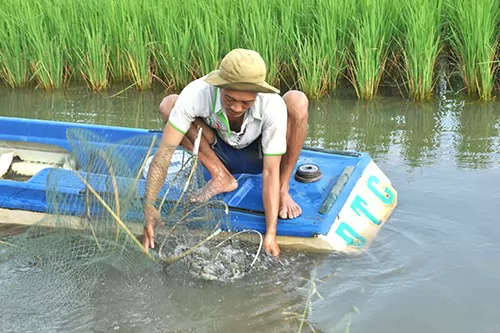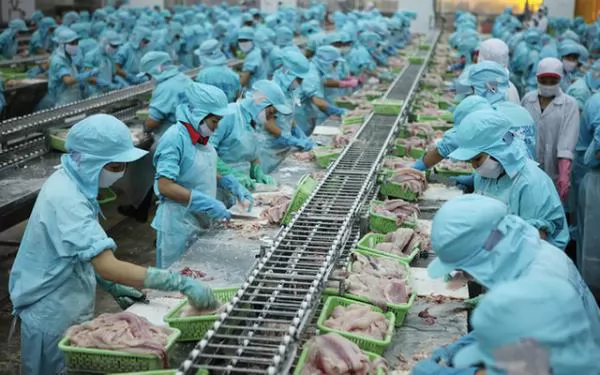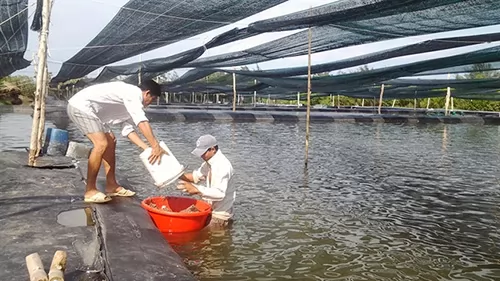Lobster farmers need breeding plan
|
|
| Farmers check their lobsters in Tho Quang Commune in the central city of Da Nang's Son Tra District. Poor raising techniques are threatening the country's lobster industry. — VNA/VNS Photo Vu Cong Dien |
HA NOI (VNS)— The lack of a sustainable source of breeding stock and poor raising techniques are threatening the young Viet Nam lobster industry, according to experts.
Department of Fisheries experts have even warned that lack of proper planning may hinder the development of a rich and promising industry.
Reports from the department show that since 2000, between 8,000 to 10,000 lobster farms have been established by farming households nationwide.
Most are in the central region, from Quang Binh Province to Binh Thuan Province. Phu Yen Province has the most farms. They have a total of more than 22,500 raising cages (cages made of wood or wire). Khanh Hoa Province is next with more than 16,300 cages.
The department estimates that the total output of lobster a year in Viet Nam is nearly 1,400 tonnes. This returns a total annual profit of VND3.5 trillion (US$166 million) to farmers.
At present, fishermen harvest young lobsters between 4-6cm from the sea using purse seines, traps and divers. However, they do not sell them directly to farmers, but through go-betweens, according to Nguyen Tri Phuong, deputy director of Phu Yen's Department of Agriculture and Rural Development.
"Diseases on the breed may develop in the period between harvesting and their release into cages," he said. This may include so-called "milky" disease, which is assumed to be the result of poor quality handling and rearing techniques.
The disease is likely to be induced by stress during handling and poor water quality during transport from the sea to farms.
Lobster farmer Nguyen Van Nam from Khanh Hoa Province's Van Phong Bay, said that at present, it was extremely difficult to breed lobsters artificially, so all stock came from the sea.
"As a result, the quality breeding stock varies from year to year, making the prices unstable," he said. This year, for example, prices have jumped sharply because of a shortage of supplies.
"At the beginning of the year, a kilogramme of lobster could be sold wholesale for nearly VND2.5 million ($119), then it gradually went down to VND2.3 million, VND1.8 million and now is at VND1.6 million ($76)," he said.
Meanwhile, Nguyen Thanh Tung, the director of the Institute for Aquaculture Economy and Planning, said that the area available for lobster farming area was continually dwindling as tourism and other types of development flourished.
"At the moment, not many special areas have been set for lobster farming, so that many cages are placed inside areas technically set aside for tourism and industry," Tung said.
Deputy Minister of Agriculture and Rural Development Vu Van Tam said that it was necessary to create a value-added chain between lobster farmers and processors similar to that set up in the region to develop the tuna industry.
Tam also called for a master plan for lobster farming. "Once there is a plan, localities will have the basis to set aside certain sea areas to raise lobsters," he said.
Tam also asked research institutes to undertake research on breeding lobsters from eggs.
"In the meantime, we need to find ways to reduce losses during breeding and producing better types of feed for the young lobsters," Tam said. — VNS
Maybe you are interested

Farmers see higher profits from sustainable shrimp–rice farming model
Viet Nam News / HCM CITY – The shrimp-rice farming model in Cà Mau Province, the largest shrimp producer in the Mekong Delta, has offered a stable income for farmers.

Bến Tre Province focuses on sustainable aquaculture, fisheries development
The Mekong Delta province of Bến Tre will develop its fisheries with a focus on processing, modernisation and deeper integration into global value chains, according to its People's Committee.

Cần Giờ has enormous potential for high-value aquatic products, swift nests
HCM CITY – After switching to breeding spotted Babylon snails nine years ago Hùynh Văn Mảnh’s income has risen by multiple times compared to breeding shrimp or fish.






